Warblers & Pachyderms, a Birding Safari with Natural History
Warblers & Pachyderms, a Birding Safari with Natural History; Individual guided birding and nature photography tour from northern Namibia to Victoria Falls in the north-east.

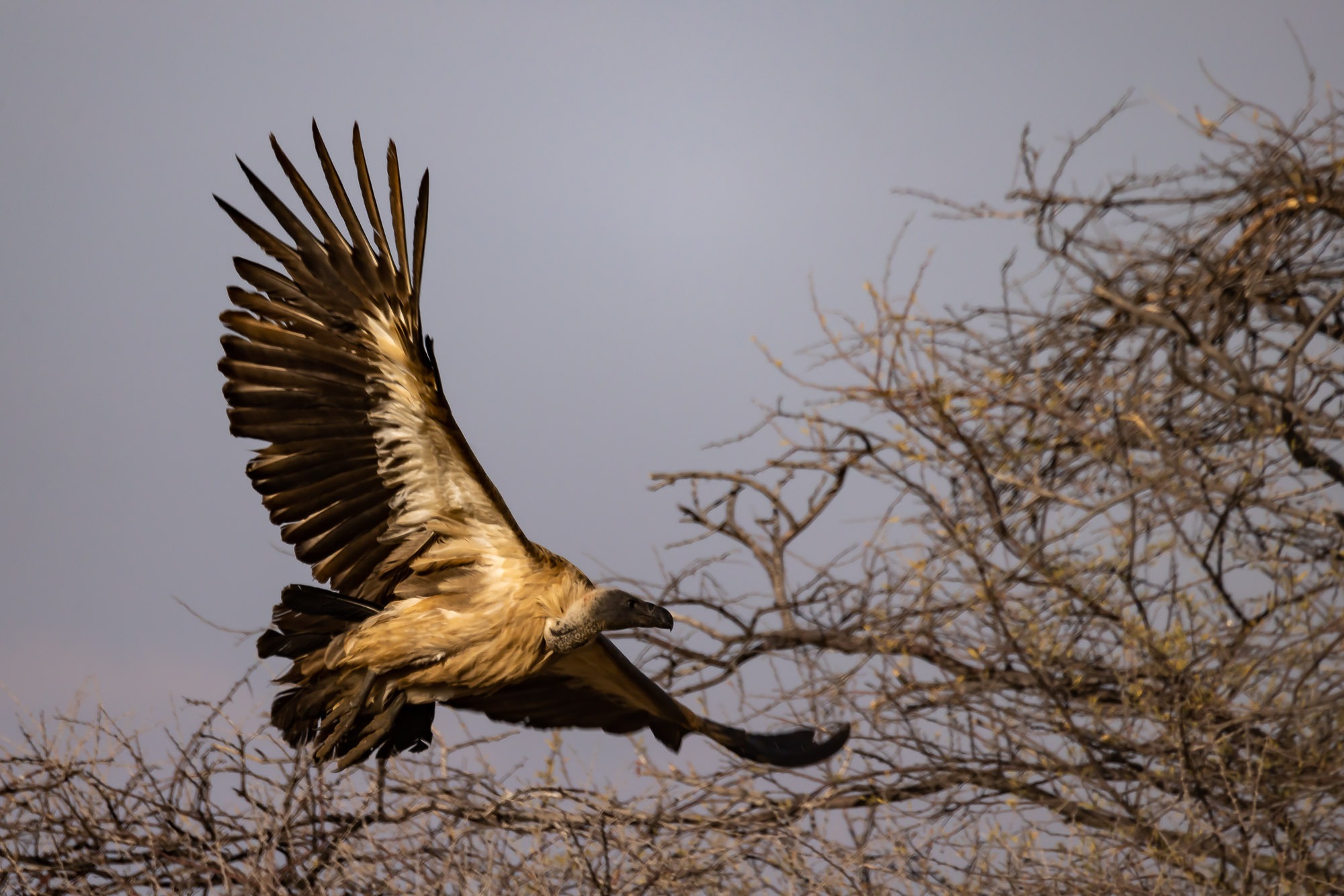
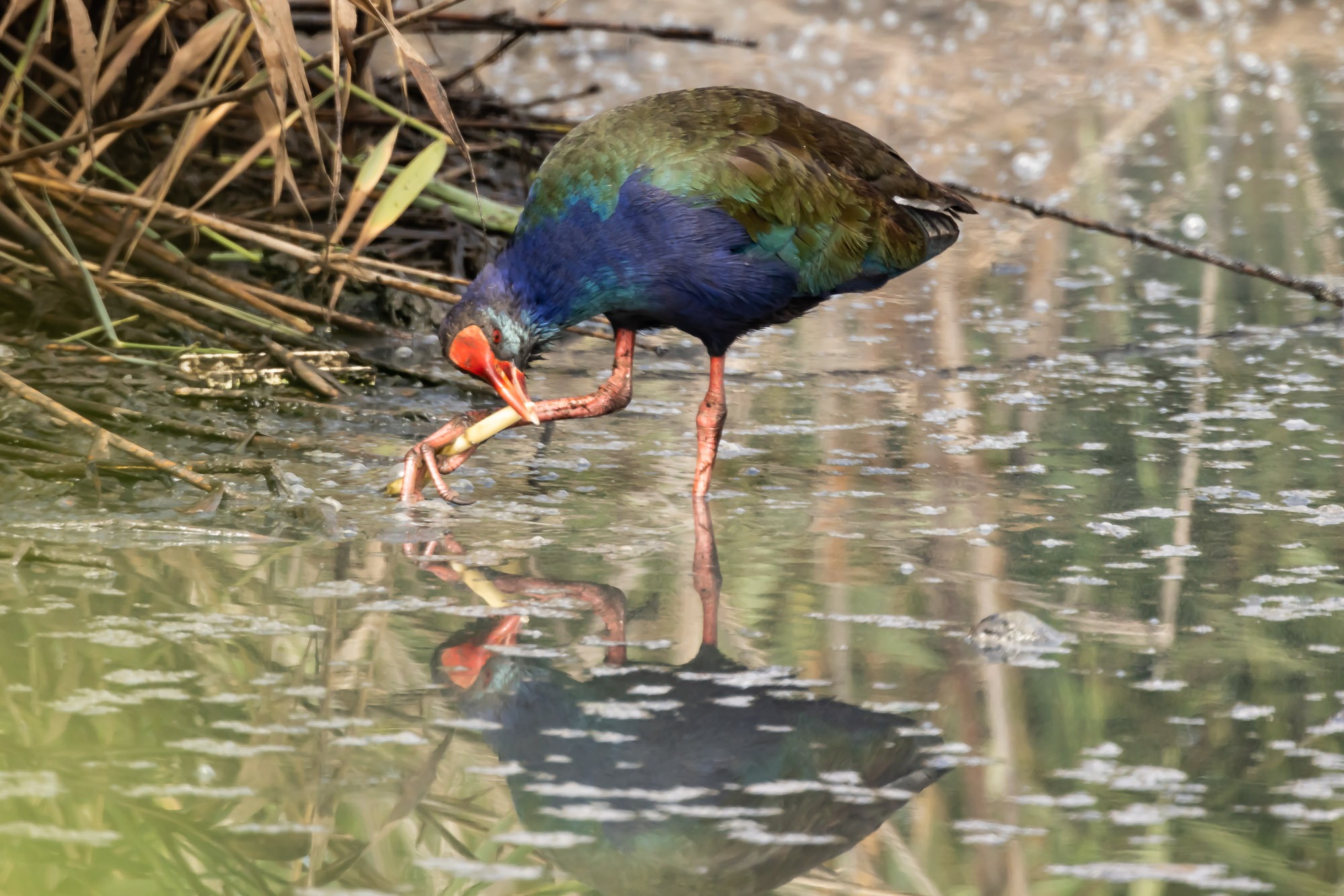
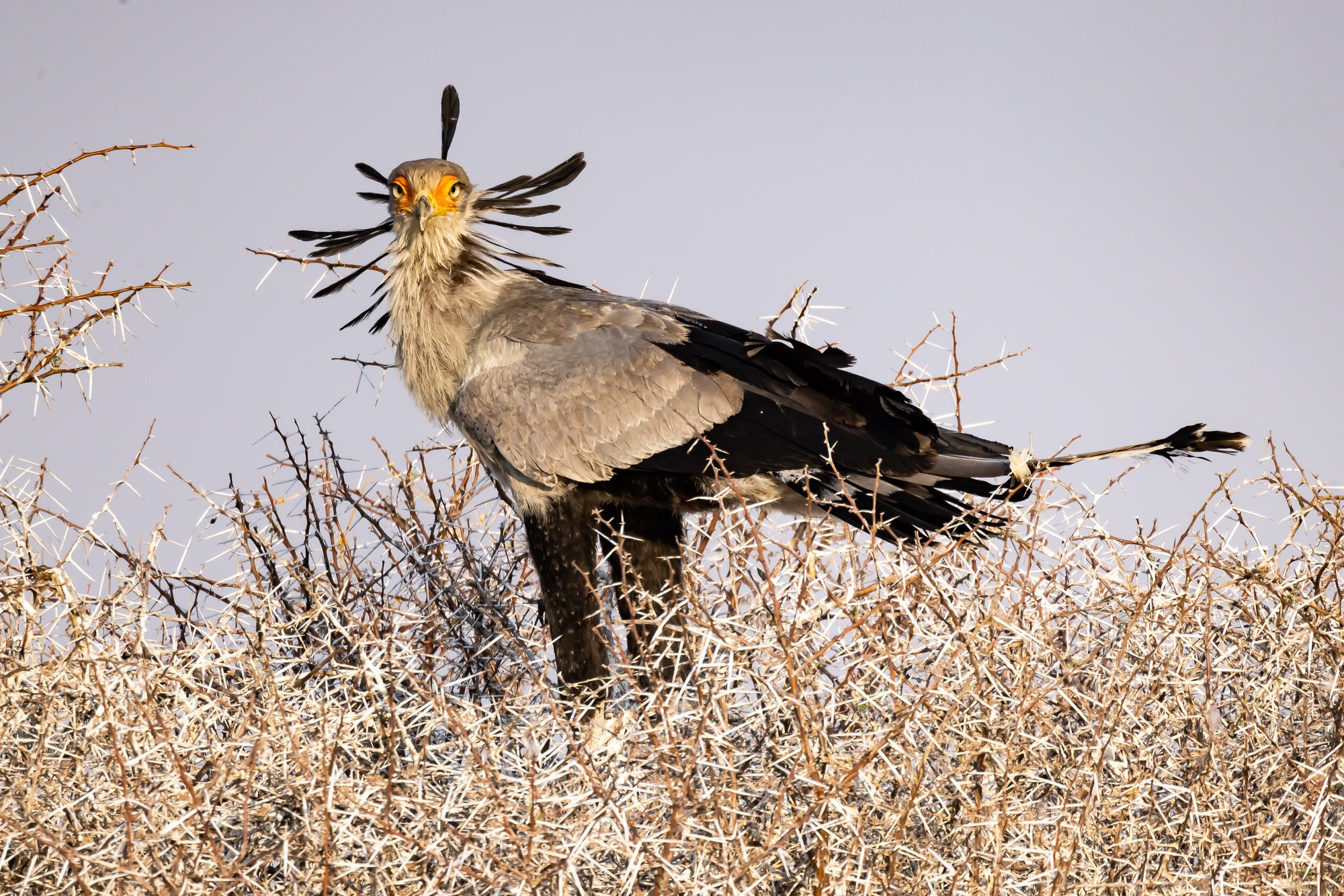
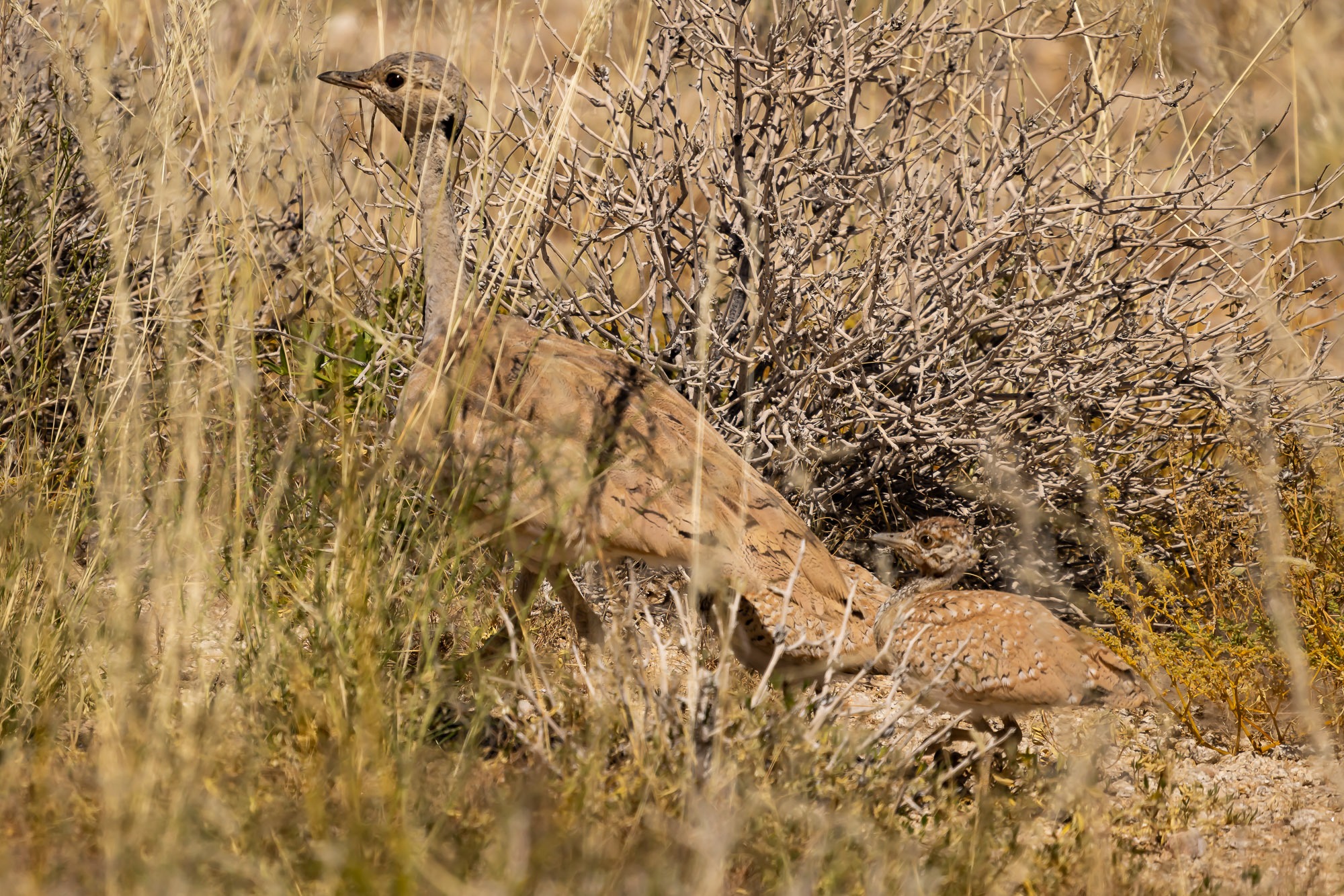



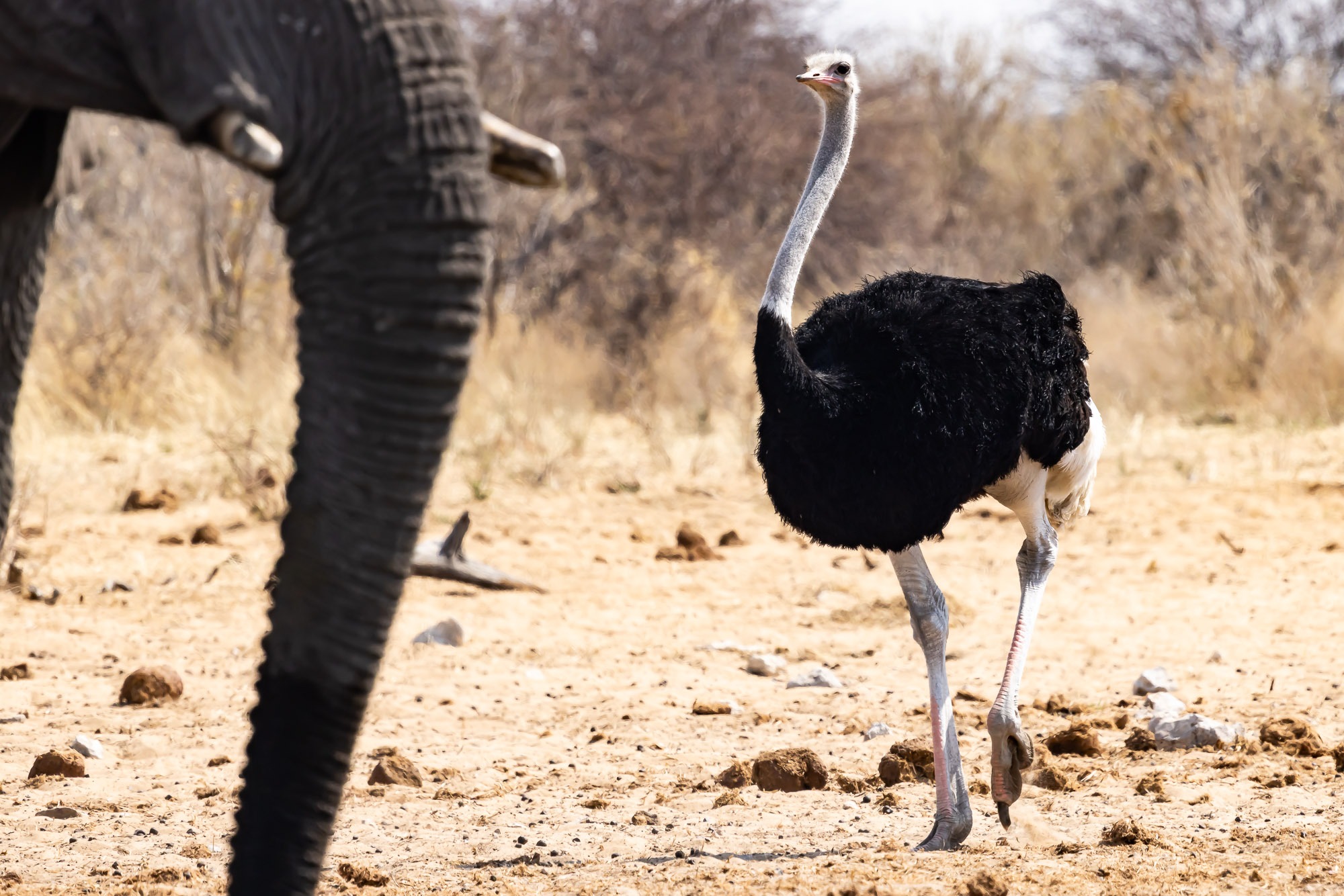

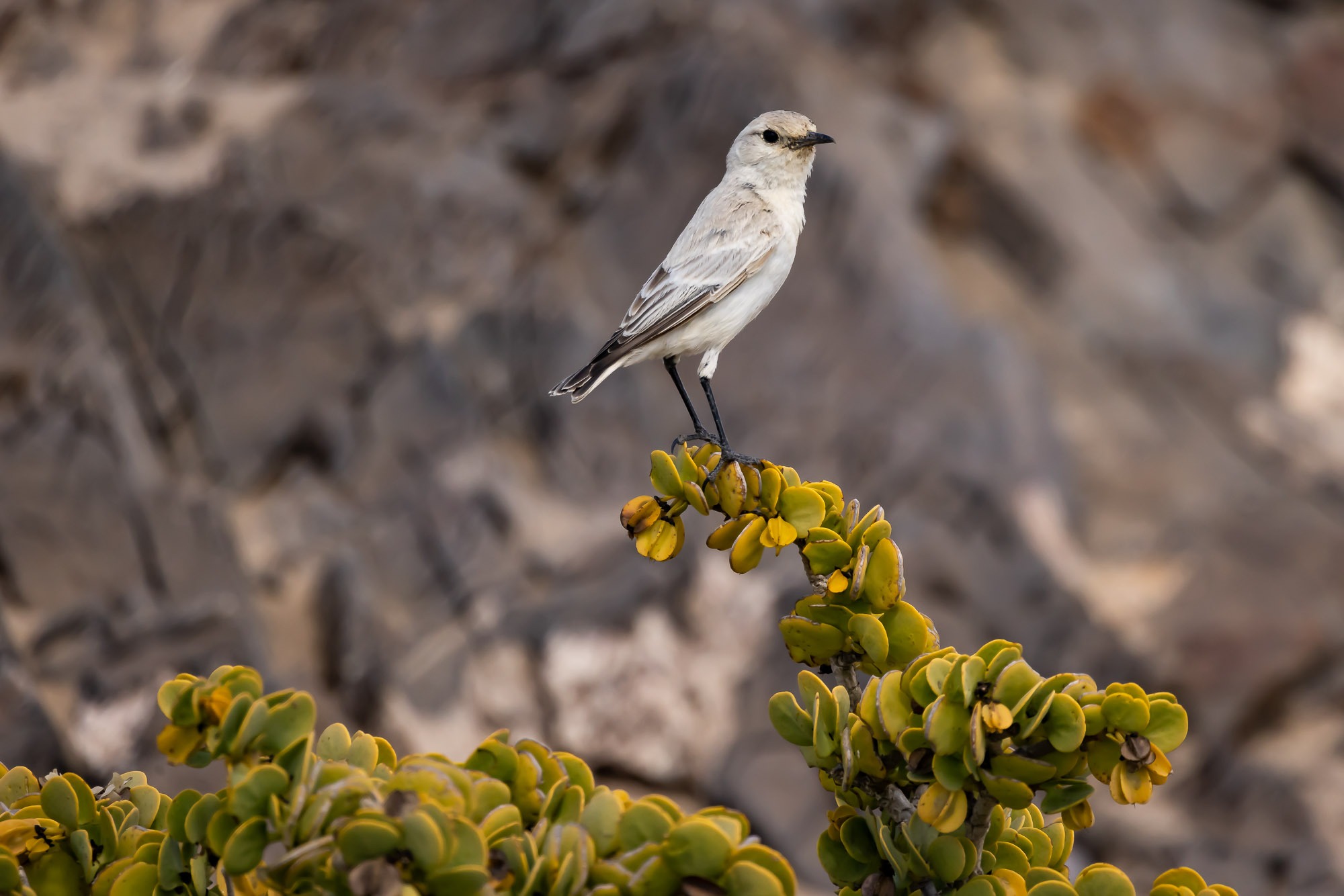
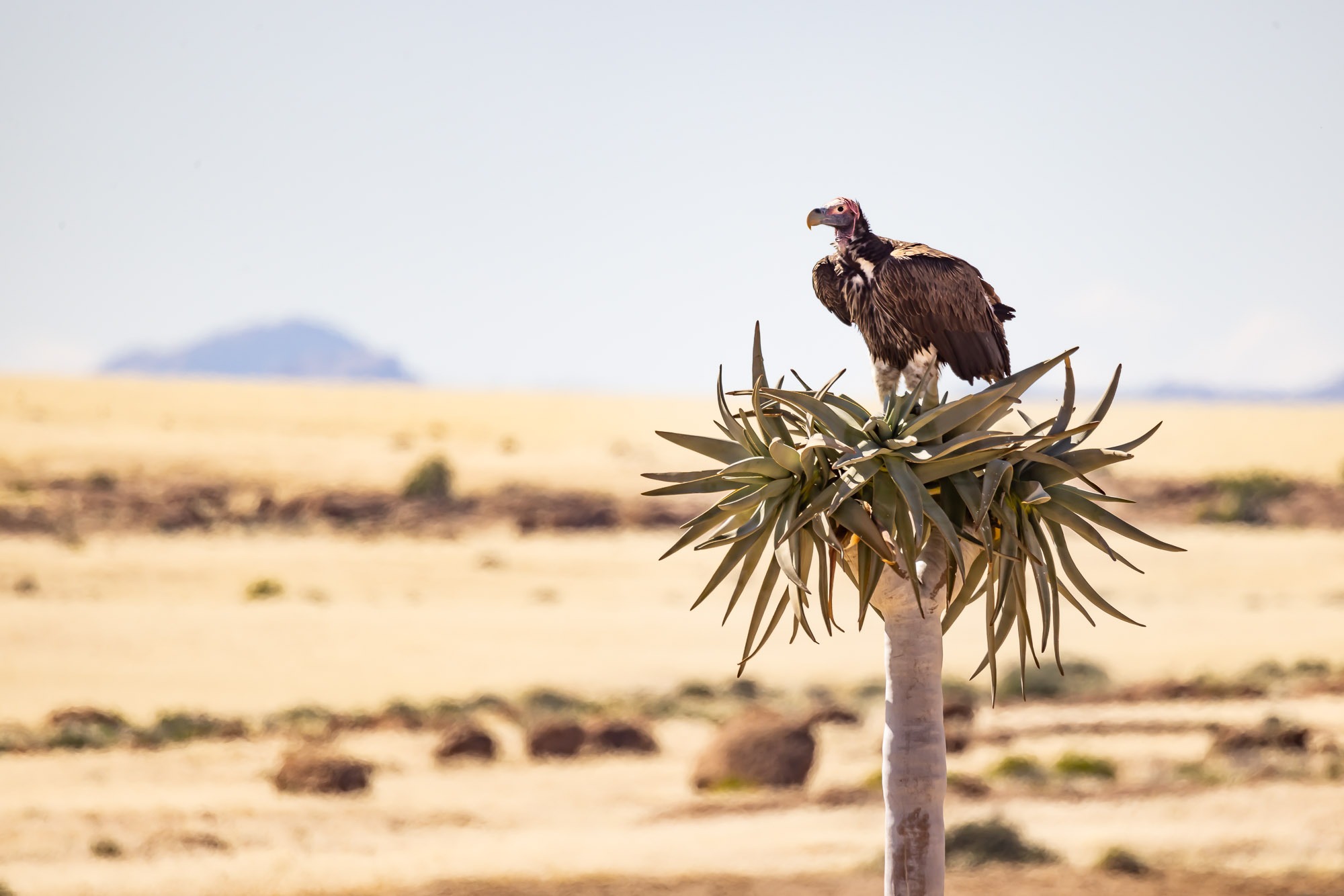
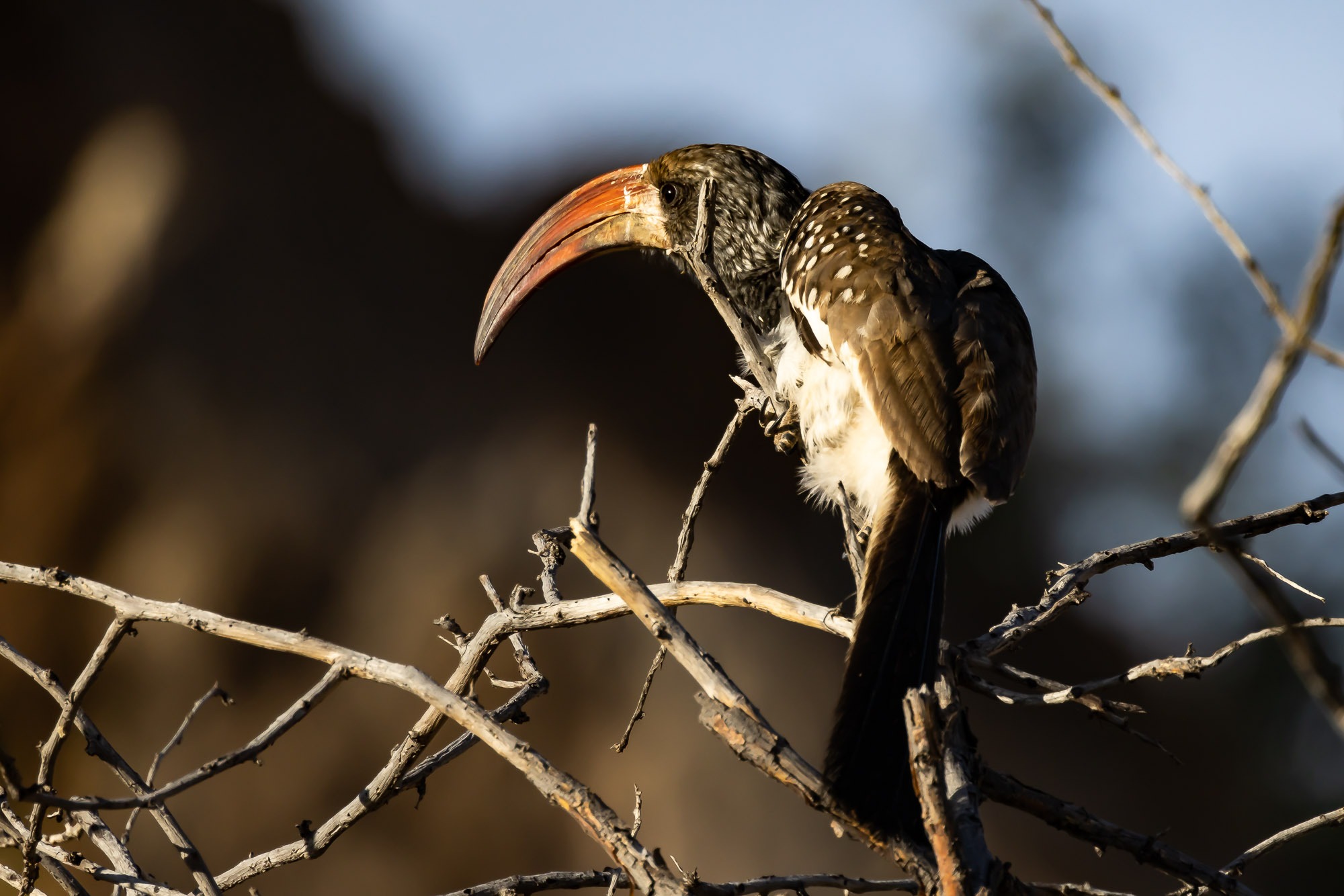

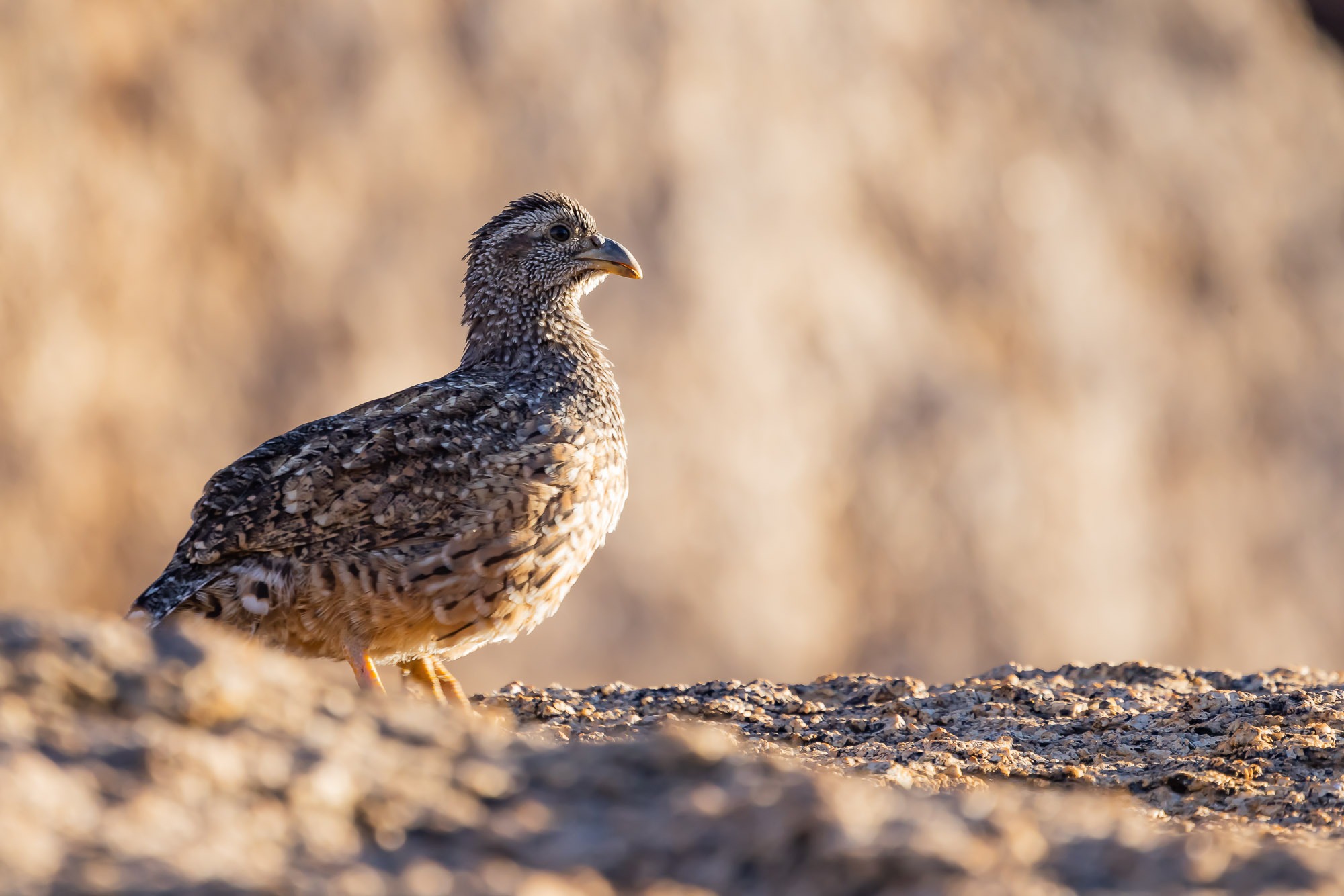
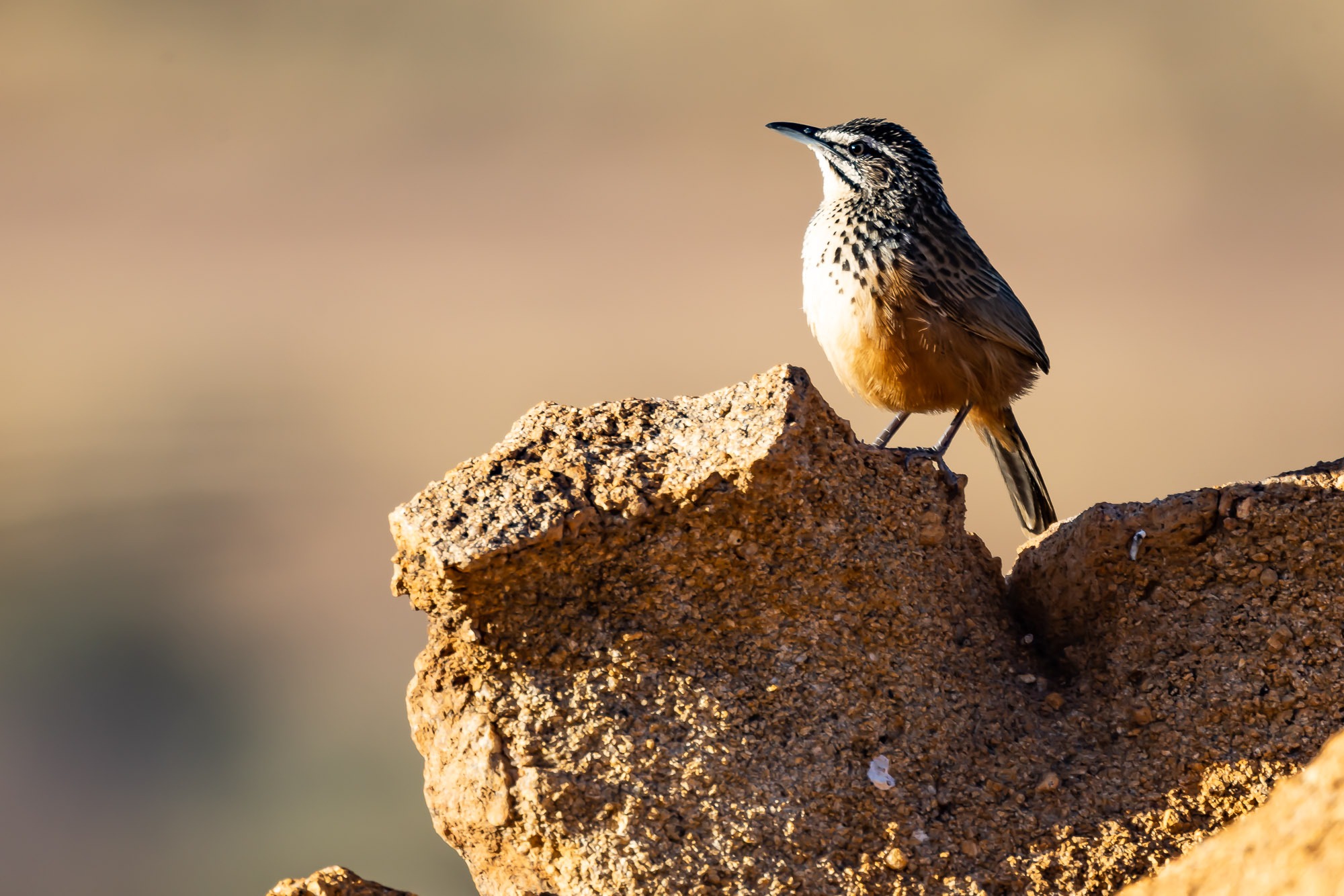
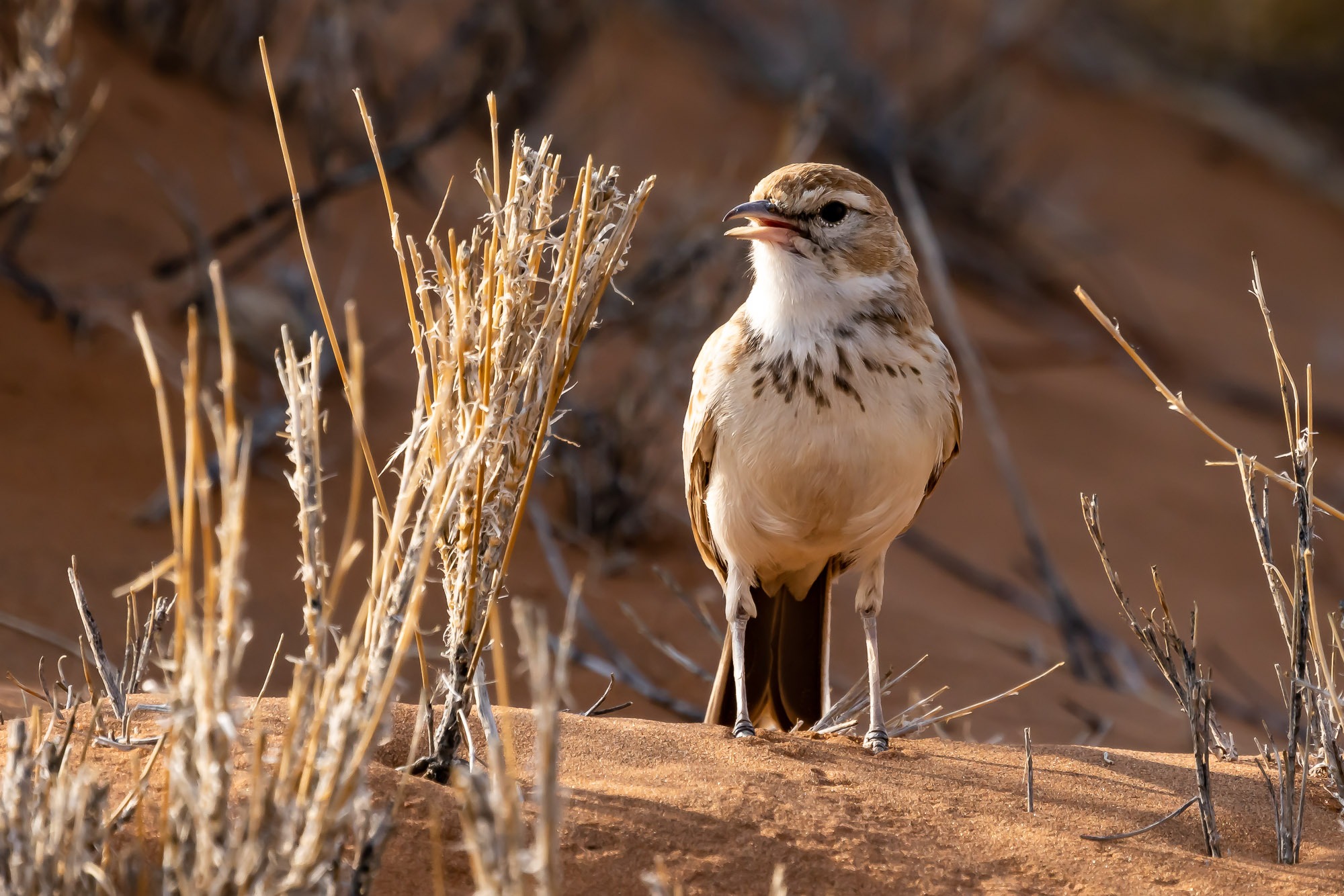
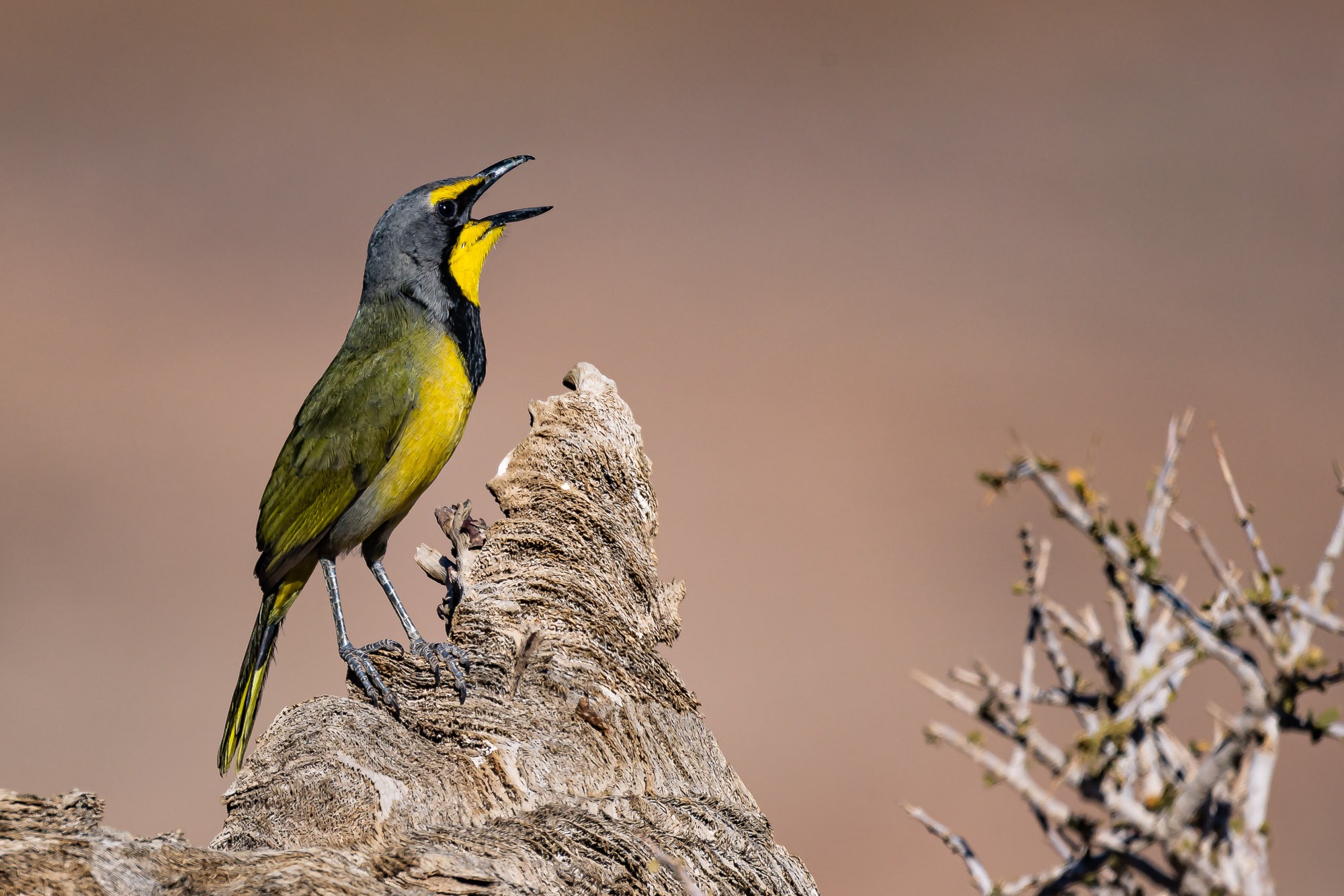
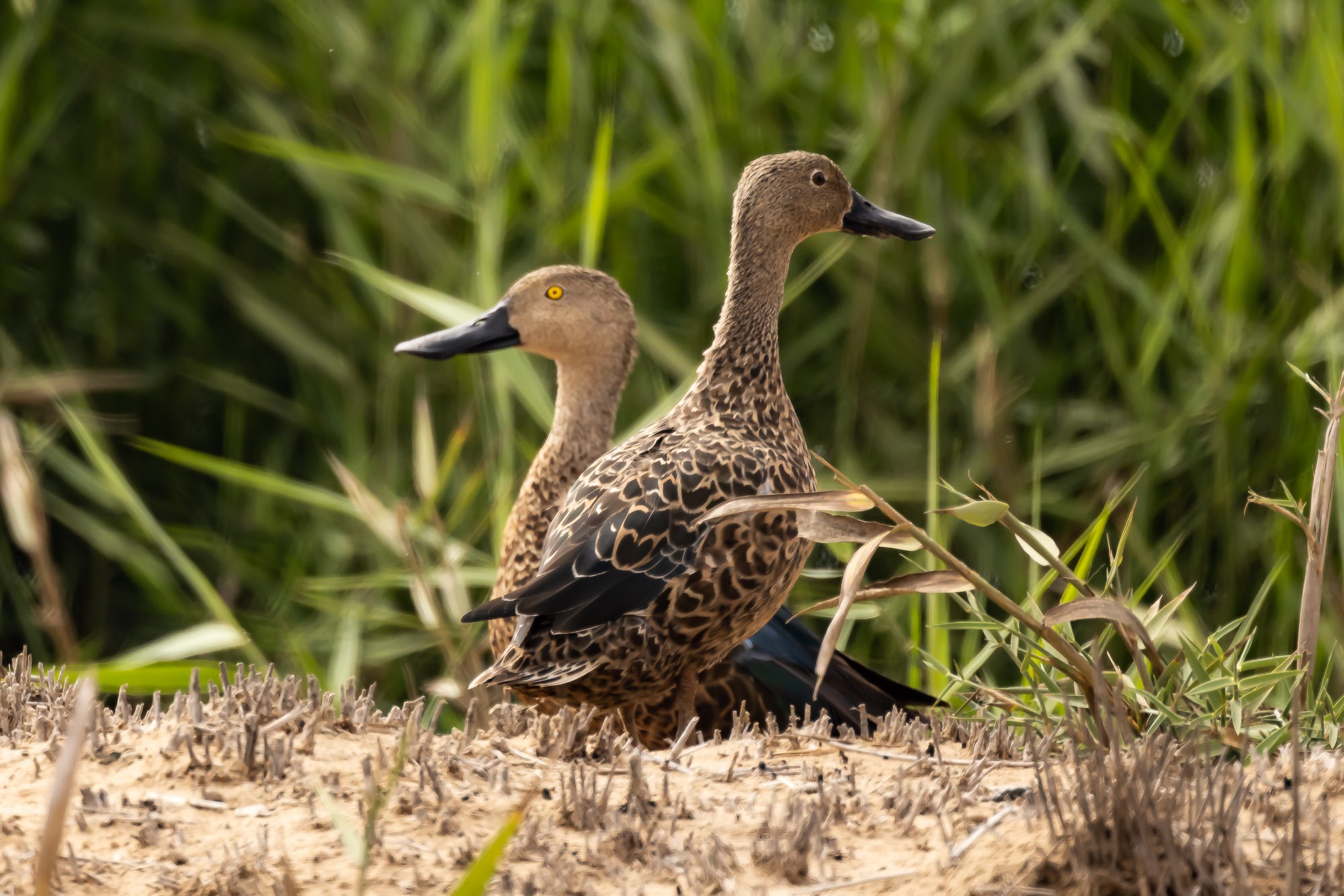
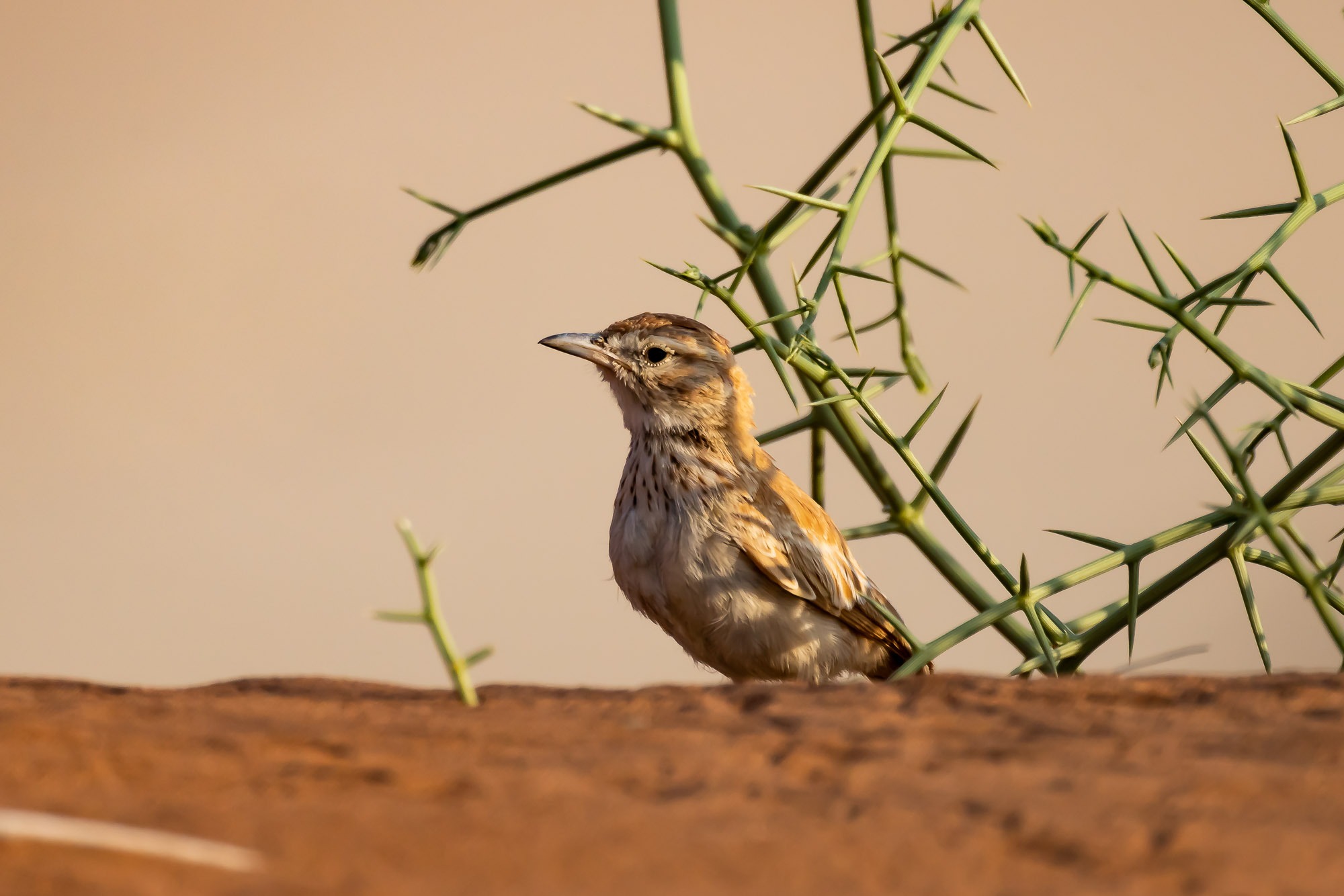
This trip is exclusively designed for birdwatching enthusiasts, focusing on optimal birdwatching and bird photography opportunities. We have carefully curated this itinerary based on our extensive experience over the past 25 years, aiming to provide you with the best chances of observing Namibia’s unique bird species, including endemics and rare birds.
From the very beginning of the trip, you can expect to encounter a wide variety of bird species, some of which are already quite special. Our approach emphasizes a relaxed and immersive birdwatching experience, with walks and short hikes that allow you to get up close to the birds in their natural habitat.
Highlights of the trip include exploring the towering dunes of Sossusvlei, home to the sought-after Dune Lark, an endemic species. Near Welwitschia, a living fossil, we will search for the Karoo Eremomela and the Namaqua Chameleon. Swakopmund offers excellent birdwatching opportunities along mudflats, a rich history to explore, chances to spot leaping dolphins, and the possibility of encountering moonfish or even whales.
At Spitzkopje, you’ll have the opportunity to photograph the rare Herero Chat amid stunning granite boulders. Erongo and Hobatere provide excellent opportunities to find near-endemic bird species. The Kunene and Ovamboland regions offer a chance to observe sought-after northern bird species, while the famous Etosha National Park promises a wealth of birdwatching opportunities, including various larks and raptors.
Finally, at Waterberg, we’ll complete the wish list by seeking out the last species before heading back home. We are committed to ensuring that this trip provides you with an unforgettable birdwatching experience and an opportunity to capture stunning photographs of Namibia’s avian treasures.
All accommodations on this trip provide the essential comfort of upper-middle-class standards, featuring “en suite” bathrooms. Furthermore, their strategic locations are chosen to enhance your wildlife viewing experience and optimize route planning for the extensive driving distances in Namibia.
Upon your arrival at the airport, we waste no time in immersing you in the natural beauty of Namibia. Depending on the season, a visit to a nearby reservoir could be on the agenda to observe the rare cliff swallow if you’re traveling in the summer.
As you settle into the lodge, the tree-filled surroundings offer a delightful introduction to the local birdlife. Here, you can expect to encounter the lively Red-billed Buffalo Weavers and the colorful Rosy-faced Lovebirds. Watch as Palm Swifts gracefully swoop down from the palm trees, and keep an eye out for Bradfield’s Swifts, which can often be seen alongside other swallows and swifts.
We’ll embark on a walk through the nearby cliffs, where we hope to spot the Orange River Francolin, and, if we’re fortunate, the Hartlaub’s Francolin. This is also the perfect opportunity to glimpse the first of our near-endemic species: the Rockrunner (Damara Rockjumper) and Rüppell’s Parrot. We’ll scan the tall trees to spot the majestic Verreaux’s Eagle-Owl.
This initial birdwatching adventure sets the stage for an exciting and rewarding journey through Namibia’s diverse birdlife and natural landscapes.
In the acacia savannah of the Namibian plateau, our exploration reveals not only some African mammals but also the semi-endemic Monteiro’s Hornbill, various Cisticola species, and the familiar Crimson-breasted Shrike, well-known throughout Africa. Our birdwatching checklist grows with additions like Bradfield’s Swift, Ashy Tit, Black-faced, Violet-eared, and Common Waxbill, Stark’s Lark, Short-toed Rock Thrush, Barred Wren-Warbler, and possibly the Orange River Francolin.
As we journey over the western Escarpment, breathtaking vistas unfold before us. Along the way, we pause to investigate the impressive Sociable Weaver nests, as Pygmy Falcons often play the role of nest-busters here. With a bit of luck, we may spot Cinnamon-breasted Warblers amid the granite formations of the Western Escarpment.
The Dune Lark, Namibia’s sole true endemic bird species, awaits as a wonderful focal point for observation. It’s not just the captivating rust-red, brown, and orange hues of this bird that fascinate, but also the awe-inspiring landscape it calls home—a true delight for nature enthusiasts.
The Fish River gracefully winds its way through the vibrant red sandstone and tranquil grey-green shale plains of our wilderness. Here on our farm, we’ve created 12 shallow reservoirs to provide sanctuaries for birdlife, and a network of “jeep tracks” guides you through the diverse habitats that make up our landscape.
Our farm is often referred to as a “lark’s paradise.” Throughout the year, you can easily spot various lark species, including the Karoo Long-billed Lark, Sabota Lark, Sclater’s Lark, Stark’s Lark, and several Sparrow-larks.
During the rainy season from January to March, our region experiences a remarkable influx of birdlife. We’ll be delighted to help you locate the sought-after Rufous-eared Warbler within the Water-thorn thickets. The lakes here are home to successful breeding populations of Greater Painted Snipes, and we’ll introduce you to hundreds of waders and waterfowl.
On the vast grasslands, you can observe various bustard species, alongside Double-banded, Temminck’s, and Burchell’s Coursers as they tirelessly hunt termites.
Our 20,000-hectare game reserve is complemented by an economically sustainable sector where nature-friendly cattle breeding is practiced. In addition to birdwatching, we aim to acquaint you with the giraffes and antelope species that call this area home. We’ll also share insights into how cattle farming can contribute to enhancing pasture fertility in the African context—an educational aspect of our experience.
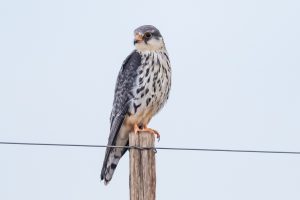
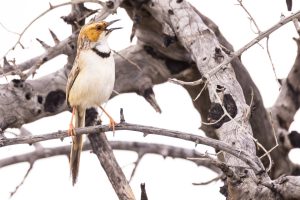
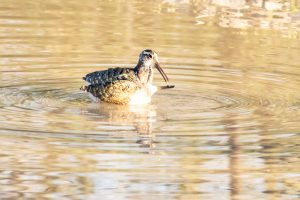
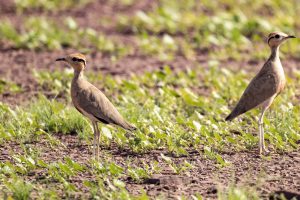
OR
We found a great spot to track down Karoo Eremomela, Benguela Long-billed Lark, Gray’s Lark and Rufous-eared Warbler amongst a few very rare plants and magnificent Geology.
The Namibian coast presents a rich array of diverse habitats for birdwatchers, provided you know how to navigate them effectively. We traverse the seemingly lifeless gravel plains of the Namib in search of the long-tailed Eremomela, Rufous-eared Warbler, and Gray’s Lark.
Who would have imagined encountering a plant almost as ancient as the Ginko biloba, first discovered by an Austrian named Welwitsch in 1859? Amid the dunes of Kuiseb, we set out to find the somewhat lighter-hued version of the endemic Dune Lark and Gray’s Lark, alongside the Trac Trac Chat. The Walvis Bay Lagoon offers a diverse array of wading birds, which can be enjoyed to the fullest during the summer months, from October to March. We are well-acquainted with the west side and secret paths that promise excellent sightings of the Damara Tern, various other terns, and of course, numerous sandpipers, ducks, and literally thousands of Flamingos.
In Swakopmund, you can savour a good coffee under the palm trees, photograph the Orange River White-eye, and explore well-stocked bookshops for ornithological literature.
The vast expanse of stunning geological formations and the sparsely vegetated pencil plants create a unique habitat for a small population of “Karoo Eremomela.” These landscapes contribute to the exceptional beauty that Namibia is renowned for!
While spotting the Herero Chat may be more challenging, the region it inhabits offers a breathtaking birding, geological, and photographic experience. The Spitzkopje, also known as Bushman’s Paradise, presents numerous opportunities for birdwatching. Klipspringers gracefully scale the rock faces, and the granite terrain is adorned with thick-stemmed “Elephant’s Foot” trees. Among our target bird species, in addition to the commonly seen Short-toed Rock-Thrush and Mountain Wheatear, are the schlegelii subspecies of the Karoo Chat, Layard’s Warbler, and the Black-backed Puffback with its striking red eye.
Between the imposing granite boulders, you’ll find intriguing succulents belonging to the vine, euphorbia, and dog poison families. Dotted amidst the landscape are various acacia species (now known as Vachellia and Senegalia due to renaming) and several grass species, creating an ideal habitat for a range of semi-desert birds.
Namibia’s breathtaking landscapes have a way of capturing the hearts of many visitors, and it’s no wonder that areas boasting semi-endemic bird, reptile, and plant species become a sought-after destination for naturalists, especially birders in search of the extraordinary.
Even before dusk settles in, we tune our ears to the calls of the hardy Hartlaub Francolin, capturing photographs of Rockrunners alongside Cape- and Cinnamon-breasted Buntings, the vocal Mountain Wheatear, and the Bokmakierie.
The seemingly inhospitable scrublands of the Namib Desert harbour the highly sought-after Herero Chat, and we’ll make every effort to track it down for you. Amongst the dense foliage of the “Resin Tree,” you may encounter the Layard’s Warbler, also known as the Tit-babbler, and with a bit of luck, you might even spot an Anthia cinctipennis.
On well-established trails tucked away in the remote corners of a private farm in the Erongo region, we’ve uncovered small bird paradises where we’d love to join you in seeking out some of the more elusive bird species.
It is possible to see all the Hobatere birds on other places as well and the lodge has undergone a change in ownership which does not really dig deep into birding as the previous owners, Steve and Louise Braine, did. Since the spot is famous for good birding we could visit it, but alternative birding is possible elsewhere…
The scenic gravel road leads us into the semi-desert of Damaraland, where we aim to observe Rüppell’s Korhaan, Burchell’s Courser, and Benguela Long-billed Lark along the way. In the concession area west of Etosha, we can get excellent views and photographs of Violet Wood Hoopoe and Bare-cheeked Babbler in the mopane trees. Rüppell’s Parrots and, in the summer, even Olive Bee-eaters can be comfortably observed in the “birdhide,” and it’s not unusual to spot a Little Sparrowhawk hunting or a Milky Owl in the gigantic Ana trees. The special variant of the Damara Red-billed Hornbill and Monteiro’s Hornbill are also popular sightings here.
In the southern gorges, we’ll be on the lookout for Kunene and Hartlaub Francolin. During night drives, Bronze-winged Coursers and various Nightjars may be spotted, depending on the time of year.
The starlings in the lodge garden are Meves’s Starlings. The perfectly camouflaged African Scops Owls can be seen in the trees, and it’s not uncommon to spot Verreaux’s Eagle Owls in daylight.
Our journey takes us to the north-western border river of Namibia, the Kunene, in search of the rare Cinderella Waxbill and the elusive Cave Chat. Along the way, we’ll traverse a picturesque landscape graced by the meandering palm groves of the Kunene River, offering a unique habitat for bird species that are exclusive to this region.
Here, we have the opportunity to spot fascinating birds such as the Rufous-tailed Palm Thrush, the Red-necked Spurfowl (ssp. afer), and with a stroke of luck, the elusive Grey Kestrel. Keep an eye out for the African Harrier Hawk and other bushveld birds that make this area their home.
Additionally, for those interested, we can make a brief stop at a Himba village, providing valuable insights into the culture and lifestyle of these pastoral people.
Our Land Cruisers, specially converted for game viewing, have wide window seats and the sunroof opens at the watering holes. This way you can comfortably take pictures sitting down or standing up.
Our journey through Ovamboland takes us past indigenous villages nestled in the “oshanas” (flood plains) of the north. As we traverse this region, keep an eye out for Mosque Swallows among the majestic baobab trees, and you might even spot some Angolan Swallows.
Continuing our drive, we arrive at Andoni Plains, an excellent hideaway for Pink-billed and Eastern Clapper Larks. At the artesian fountain, you can observe a variety of wetland waders and water-related birds, including the graceful Whiskered Tern.
Etosha National Park, often referred to as the “Great White Place,” spans over 22,000 km/2 and ranks among Africa’s most wildlife-rich parks. While the thrill of spotting a lion by the roadside or encountering a herd of elephants is undeniable, it’s essential to recognize that Etosha’s landscape is harsh, and its wildlife faces challenging conditions.
In this unique environment, keep an eye out for the Etosha Agama and the elegant Blue Crane, as well as the remarkable Termite mounds that serve as territorial markers for Rufous-naped Larks. Amidst dense vegetation, you may also spot the diminutive Damara Dik Dik Antelopes.
Etosha’s diverse habitats, including grasslands, dry forests, floodplains, and dense acacia scrub, contribute to its extensive biodiversity. This diversity ensures that you’ll encounter not only a wide array of species but also a multitude of different birds and animals within this national park.
If you are wondering what is always jumping from tree to tree, catching your eye and yet not being seen… because the animal is just too fast… these are Southern Lesser Galagos, a wonderful mammal species that definitely deserves your attention.
Also, the adorable little Damara Dik-Dik antelopes can be seen between the trails.
Beware. Close your windows… baboons are a nuisance here!
In the afternoon, we arrive at the Waterberg. This striking sandstone plateau with its five distinct vegetation levels provides diverse habitats and, consequently, a wide variety of bird species.
Bird enthusiasts particularly adore the Waterberg, as it offers the chance to spot Rüppell’s Parrot and Bradfield’s Hornbill amidst the dramatic backdrop of red sandstone cliffs. While Meyer’s Parrots have been seen here on occasion, they are the exception rather than the rule. As we explore the well-marked trails, we keep an eye out for White-browed Scrub-Robin, Long-billed Crombec, various Woodpeckers, Cuckoos, several Francolin species, and numerous Swifts. It’s not uncommon to spot raptors such as Wahlberg’s Eagle, Augur Buzzard, Verreaux’s Eagle, and Booted Eagle soaring above the stunning red sandstone slopes.
At night, our chances of encountering Nightjars and African Scops Owlet are quite good. If the opportunity arises, you can arrange a locally guided game drive up the plateau to a vulture restaurant, where you might have the chance to see Cape Vultures alongside Lappet-faced and White-backed Vultures.
no matter the weather…
There are numerous international flights available, providing our guests with various options for their departure. Many choose to combine the final leg of their journey with airport transfer and afternoon check-in. However, for those who wish to explore the city further or reduce the last-day stress, we offer the option to book an additional overnight stay in Windhoek or a stylish accommodation near the airport.
Some of our guests also opt for additional components, such as a fly-in to the Caprivi, a visit to the Okavango Delta, or a few days in Cape Town as part of their extended travel plans.
We will ensure you reach the International Airport in a timely manner, and we sincerely hope that we have provided you with the birdwatching experiences and natural moments you desired, leaving you with lasting memories of our time together in nature.
| Participants per vehicle | per Person |
|---|---|
| 1 Person | 14'852.00 U$ |
| 2 Persons | 9'339.00 U$ |
| 3 Persons | 7'501.00 U$ |
| 4 Persons | 6'582.00 U$ |
| 5 Persons | 6'031.00 U$ |
| 6 Persons | 5'663.00 U$ |
| 7 Persons | 5'401.00 U$ |
| Single Room Supplement | 661.00 U$ |
This trip can be successfully carried out at any time of the year. However, we do not recommend coming in the months of June to August, but rather before when migratory birds are still present, or after when they arrive again.
You can fly via Cape Town to Walvis Bay, where the trip could start and end in a different way. We would also be happy to guide them at the Cape… because it is worth it.
When would this trip be most fruitful ornithologically?
Certainly February to April would be the best time for this trip. Migratory birds can be seen and very many birds breed in the “green” period. We even go to photograph golden snipes in southern Namibia in March.
Definitely! You will have to change trains once, but you will gain a lot of time on connecting routes and will be overwhelmed by the birdlife at the World Heritage Site of the lagoon immediately after arrival. We strongly encourage you to start all your trips in Walvis Bay, as this is stress-free and safer.
This Safari was last updated on 26. April 2024 @ 12:02.
Warblers & Pachyderms, a Birding Safari with Natural History; Individual guided birding and nature photography tour from northern Namibia to Victoria Falls in the north-east.
Avifauna Namib to Zambezi in February 2025, the guided birding tour with natural history specialities.
Namib, Etosha, Okavango, Chobe, Zambezi to Victoria Falls
15 Days – Diverse Namibia – July 2025, a guided Safari in a small group through Namibia, where you’ll immerse yourself in the abundant wildlife and flora, as well as encounter numerous highlights of this remarkable country.